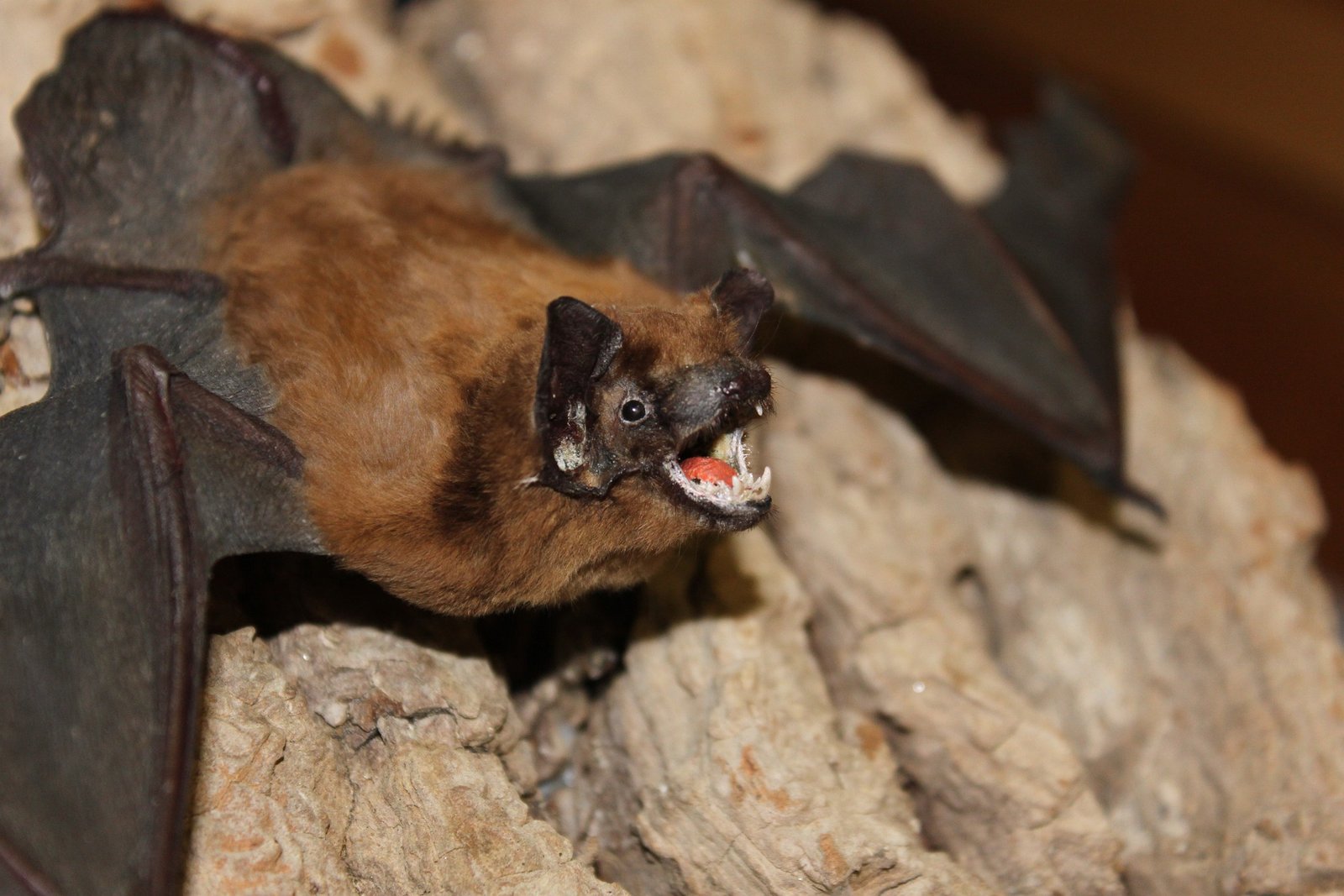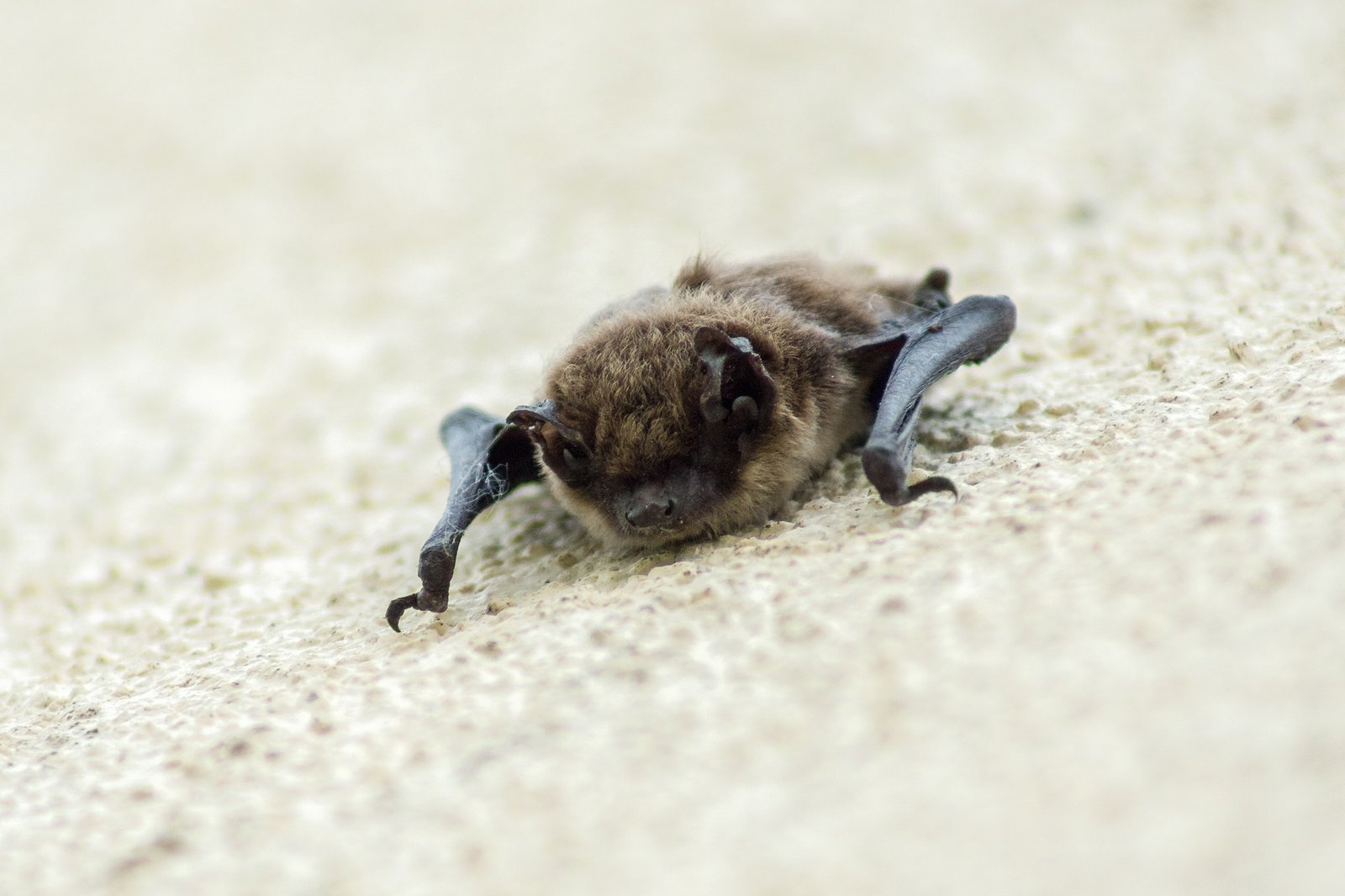Fringed Myotis: Myotis Thysanodes

Description Of The Fringed Myotis
A member of the long-eared myotis group is the Fringed Myotis. Although similar to the Western Long-eared Myotis (Myotis evotis), it is the only species that’s uropatagium’s posterior margin (membrane between the thighs) contains a well-developed hair border and is larger than most other Myotis. There is no distinct keeling of the robust calcar. The skull, with a well developed sagittal crest and 38 teeth, is relatively large.
The color of the fur varies from yellowish-brown to darker olive tones; in northern populations, the color tends to be darker. The ears and membranes tend to contrast with the pelage and are blackish-brown. 1Go To Source fieldguide.mt.gov -“Fringed Myotis – Myotis thysanodes”
Learn More: Myotis Bats In The U.S.
Fringed Myotis Body Size
In this smaller bat species, females tend to be larger than males. The average fringed myotis measures:
- Body Length: 43-59 mm
- Tail Length: 34-45 mm
- Ear Length: 16-20mm
- Forearm Length: 40-47 mm
- Weight: 5.4-10 g
Typical Fringed Myotis Behavior
This species generally rises from hibernation around mid-may and begin their nursing colonies. Fringed myotis colines in the southern United States may contain hundreds of bats.
In order to care for the young, female “nurse bats” remain in the roost while other adults are out foraging. During the summer months, males and females usually do not associate with each other, and males are not found within the maternity roosts. By the end of October, the colonies had generally dispersed. 2Go To Source animaldiversity.org -“Myotis thysanodes fringed myotis”
Fringed Myotis Reproduction Habits
Breeding occurs in the fall; ovulation, fertilization, implantation, and gestation happen in the spring, and the females store sperm in their uterus during the winter. In nursery colonies, up to several hundred females congregate. While the young are reared, males are solitary.
Female fringed myotis give birth to offspring after a 50 to 60 day gestation period. Young newborns are hairless and pinkish, and they shut their eyes. However, growth is quick, and they can fly by the age of 20 days.
The maximum known life expectancy is 11 years. The expected lifespan is much shorter, but some bats of this species may live longer. 3Go To Source cnhp.colostate.edu -“Fringed myotis (Myotis thysanodes)”
Diet Of The Fringed Myotis

Crickets, moths, spiders, leafhoppers, lacewings, beetles, flies, and other invertebrates consist of the Fringed Myotis diet. The presence of flightless insects in the diet shows that some prey is gleaned from the leaves. Stomach content analyses indicate that moths, arachnids, leaf and grasshoppers, beetles in western Oregon, and moths/leafhoppers in eastern Oregon are the main prey.
This species’ slow and highly maneuverable flight is well suited to both aerial capture and glean prey from the foliage. This suggests that fringed myotis are adapted for foraging within forests and along forest edges while utilizing echolocation calls.
Peak foraging times are one to two hours after sunset. Foraging sites average 1.6 km away from day roosts in Washington and Oregon’s ponderosa pine forests. 4Go To Source eopugetsound.org -“Fringed Myotis (Myotis thysanodes)”
Fringed Myotis Habitat
A fairly wide range of habitats appear to be used by Myotis thysanodes. At middle elevations, oak, pinyon, juniper woodlands, and ponderosa pine forests are the most common habitats where this species has been found. Deserts, grasslands, and other kinds of forests also appear to be used.
In dry habitats where open areas are interspersed with mature forests, M.thysanodes is mostly found. Nearby water sources and suitable cliff or snag roost habitat provide the ideal habitat. 5Go To Source fs.usda.gov -“Fringed Myotis (Myotis thysanodes): A Technical Conservation Assessment”
Roosting Habitats For The Fringed Myotis
This species inhibits hot desert scrubland, grasslands, xeric woodlands, sage-grass steppe, mesic old-growth forest, multi-age subalpine, and mixed-deciduous forest. Xeric woodlands appear to be the most frequently used (oak and pinyon-juniper).
If available, caves, buildings, underground mines, rock crevices in cliff faces, and bridges are used for hibernation/maternity roosts. Hibernation has only been documented in underground mines and humanmade buildings, but it’s believed this species needs cool unfrequented roosting locations. Researchers in Oregon, New Mexico, and California have also reported fringed myotis tree-roosting. 6Go To Source tpwd.texas.gov -“Fringed Myotis (Myotis thysanodes)”
Fringed Myotis Range In The U.S.
The fringed myotis, which occurs in all but the Central Valley and Colorado and Mojave deserts, is widespread in California. It appears that its abundance is irregular; locally, it may be common.
It occurs in a wide variety of habitats; in New Mexico, records range from sea level to 9350 ft. Optimal habitats Pinyon-juniper, valley foothill hardwood, and hardwood-conifer, generally at 4,000-7,000 ft.7Go To Source nrm.dfg.ca.gov -“FRINGED MYOTIS Myotis thysanodes”
Threats To The Fringed Myotis Species
Maternity colonies are prone to human disturbance. In addition, if the roost structure is destroyed, fringed myotis could easily cause disruption. Through road construction and other activities that require blasting, roosts in rock crevices are susceptible to destruction. Recreational activities, such as rock climbing or spelunking, can disrupt colonies, causing mortality, particularly for young bats.
Disruptions of the roost will force the bats to search for another roosting location. The new roosting site may be less suitable or even worse, never found. During the disruptions, young bats are left behind due to their inability to fly.
A less common but still apparent threat is livestock excrement contaminating surface water. 8Go To Source env.gov.bc.ca -“FRINGED MYOTIS Myotis thysanodes”
Sources:
- Fringed Myotis — Myotis thysanodes. Montana Field Guide. Montana Natural Heritage Program and Montana Fish, Wildlife and Parks. Retrieved on January 7, 2021, from http://FieldGuide.mt.gov/speciesDetail.aspx?elcode=AMACC01090
- Vingiello, S. 2002. “Myotis thysanodes” (On-line), Animal Diversity Web. Accessed January 07, 2021 at https://animaldiversity.org/accounts/Myotis_thysanodes/
- CBWG. “SpeciesProfile.” Colorado Bat Working Group, Colorado State University, 4 June 2020, cnhp.colostate.edu/cbwg/bat-list/speciesprofile/?speciesID=4.
- Hayes, Gerald, and Gary Wiles. “Fringed Myotis (Myotis Thysanodes).” Encyclopedia of Puget Sound, Puget Sound Institute, June 2013, www.eopugetsound.org/articles/fringed-myotis-myotis-thysanodes.
- Keinath, D.A. (2004, October 29). Fringed Myotis (Myotis thysanodes): a technical conservation assessment. [Online].
USDA Forest Service, Rocky Mountain Region. Available: http://www.fs.fed.us/r2/projects/scp/assessments/
fringedmyotis.pdf. Retrieved on January 7, 2021 - TPWD. “Fringed Myotis (Myotis Thysanodes).” Texas Parks And Wildlife, Texas Parks and Wildlife Department, tpwd.texas.gov/huntwild/wild/species/fringemyotis. Accessed 7 Jan. 2021.
- Harris, J. “California Wildlife Habitat Relationships System.” California Department Of Fish And Wildlife, State Of California, 1990, nrm.dfg.ca.gov/FileHandler.ashx?DocumentID=2325.
- Sarell, Mike. “FRINGED MYOTIS.” British Columbia, Province of British Columbia, 2004, www.env.gov.bc.ca/wld/frpa/iwms/documents/Mammals/m_fringedmyotis.pdf.
